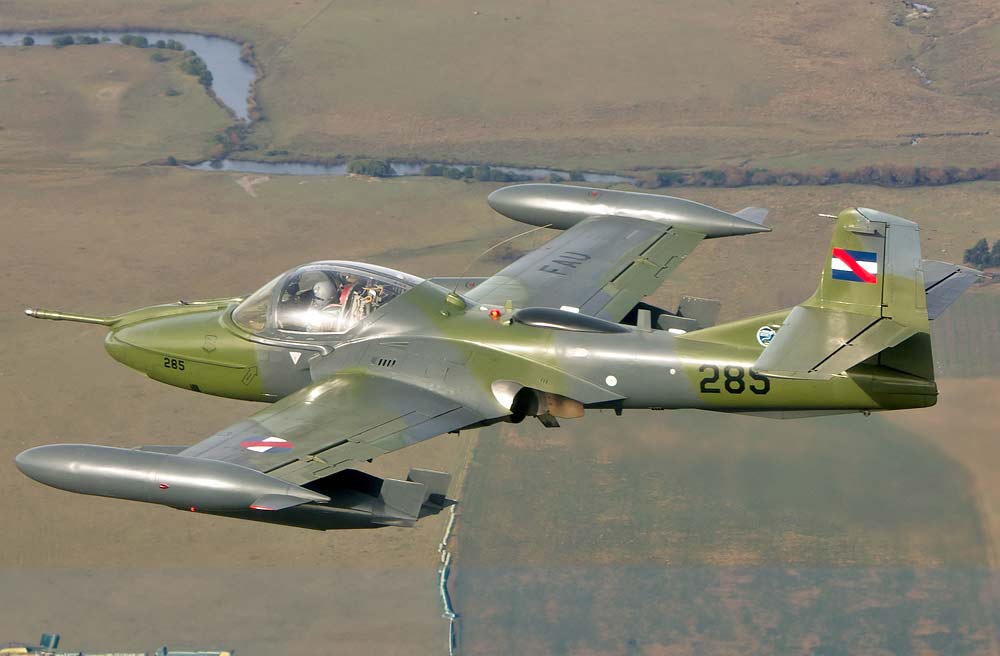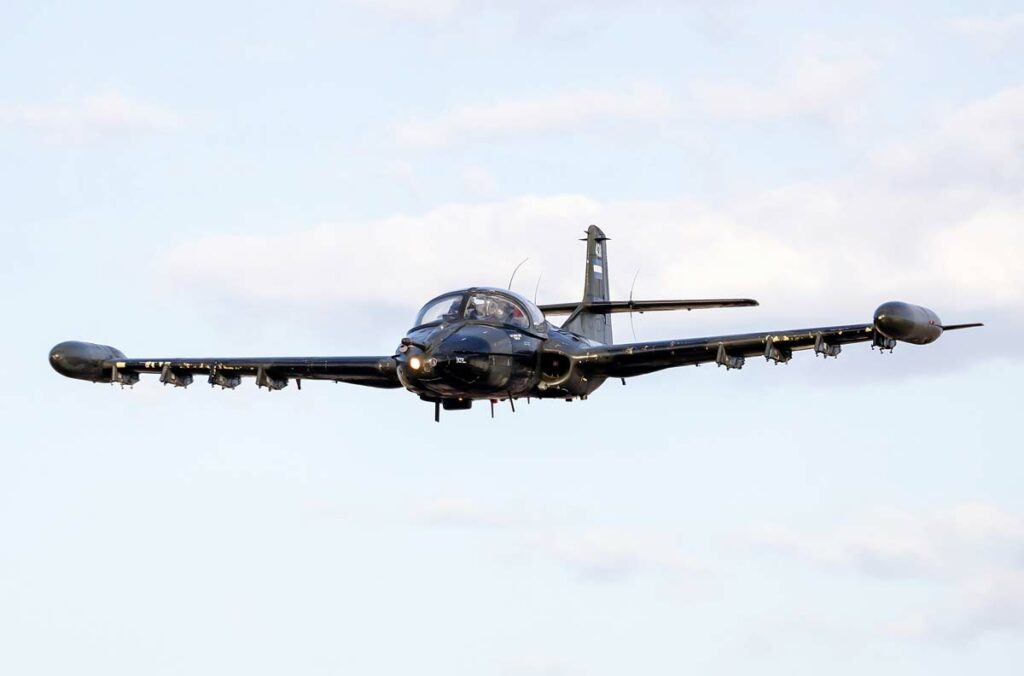The Cessna A-37 Dragonfly, also known as the Super Tweet, is a compact, twin-engine light attack aircraft renowned for its versatility and endurance in close air support and counter-insurgency operations.
In brief
The Cessna A-37 Dragonfly, developed from the T-37 Tweet trainer, transformed into a formidable light attack aircraft widely used during the Vietnam War. This twin-engine, jet-powered aircraft is distinguished by its durability, ease of maintenance, and cost-effectiveness. Equipped with two General Electric J85-GE-17A turbojet engines, it features reinforced wings to carry additional ordnance, an internal GAU-2B/A minigun, and provisions for external fuel tanks, enhancing its range and loiter time on the battlefield. Its straightforward design permits operations from austere runways, making it an optimal platform for close air support, forward air control, and light attack missions.
The Cessna A-37 Dragonfly epitomizes the transition from a primary trainer to a highly effective light attack aircraft, embodying adaptability and precision in counter-insurgency and close air support roles.

History of the Development of the Cessna A-37 Dragonfly (Super Tweet)
Originally stemming from the T-37 Tweet, a jet trainer for the United States Air Force (USAF), the need for a light attack aircraft became apparent in the early 1960s, particularly for counter-insurgency operations and close air support. The USAF initiated the Combat Dragon program to evaluate the T-37’s potential in combat scenarios, leading to the birth of the A-37.
The A-37 Dragonfly was born out of practicality and necessity. With the escalating conflict in Vietnam, there was a pressing requirement for an aircraft that could perform light attack missions, provide prolonged close air support, and withstand rugged operational conditions. Cessna responded by enhancing the T-37 into the A-37, which first flew in its modified form in 1967. This aircraft incorporated significant upgrades, including more powerful engines, increased fuel capacity, and greater armament capabilities, specifically tailored for the demands of combat experienced in Southeast Asia.
Design of the Cessna A-37 Dragonfly (Super Tweet)
The A-37 Dragonfly design leveraged the basic airframe of the T-37 but incorporated significant modifications. The aircraft was fitted with two General Electric J85-GE-17A engines, providing a total thrust of 5,440 pounds, which was nearly double that of the original T-37. It featured a strengthened airframe to handle increased ordnance loads, an aerial refueling probe, and improved avionics suited for combat missions.
Its design includes a low-mounted wing and a high T-tail, which, combined with its lightweight structure, contribute to its excellent maneuverability and performance at low speeds and low altitudes – crucial for its role in close air support. The A-37’s compact size and rugged construction allow operations from forward air bases and even hastily prepared airstrips, increasing its operational flexibility.
Performance of the Cessna A-37 Dragonfly (Super Tweet)
The A-37 Dragonfly excels in operational versatility, capable of speeds up to 507 mph and a service ceiling of 41,765 feet. Its range extends to 460 miles, but with external fuel tanks, it can be significantly extended, enhancing its endurance for prolonged missions. The aircraft’s performance is optimized for low-altitude, close air support missions, providing precise, reliable firepower where needed.
Comparatively, the A-37 holds a unique position among light attack aircraft of its time, like the OV-10 Bronco, offering a jet-powered alternative that combines the capabilities of a trainer and a combat aircraft, thus ensuring adaptability across various mission profiles.
Variants of the Cessna A-37 Dragonfly (Super Tweet)
The A-37 underwent several modifications, resulting in two main variants:
- A-37A: Initially converted from T-37 trainers, this variant was equipped with more robust engines and increased armament capabilities.
- A-37B: The definitive version, featuring further enhancements such as a zero-zero ejection seat, increased fuel capacity, better avionics, and a more potent armament loadout.
Each variant was designed to improve upon the combat capabilities and operational flexibility of the aircraft, ensuring it met the evolving requirements of modern warfare.

Military Use and Combat of the Cessna A-37 Dragonfly (Super Tweet)
The A-37 Dragonfly saw extensive combat during the Vietnam War, where it was employed for counter-insurgency operations, close air support, and forward air control missions. Its effectiveness in these roles was proven by its ability to deliver precise strikes with a variety of munitions, its durability in sustaining damage, and its agility in low-altitude flight profiles.
Post-Vietnam, the A-37 was adopted by numerous air forces around the globe, particularly in Latin America, where it continued to serve in both counter-insurgency and conventional roles. Its combat history includes participation in conflicts such as the Salvadoran Civil War, where it demonstrated its operational worth in a variety of combat scenarios.
The Cessna A-37 Dragonfly, or Super Tweet, stands as a testament to the adaptability and enduring relevance of light attack aircraft in modern warfare. It exemplifies how a platform initially designed for training can be effectively transformed into a potent combat aircraft, capable of delivering precise, reliable firepower in a range of operational contexts. The A-37’s legacy is marked by its significant contribution to close air support, counter-insurgency, and forward air control missions across various global theaters.
Back to the Fighter Jet section.